Subscribe to blog updates via email »
May 2021 Income Report
An audio version of this income report is available to Patreon backers of certain levels »
May’s revenues were $5,834, up from April’s $5,007. Profits were $4,232, up from April’s $3,059.
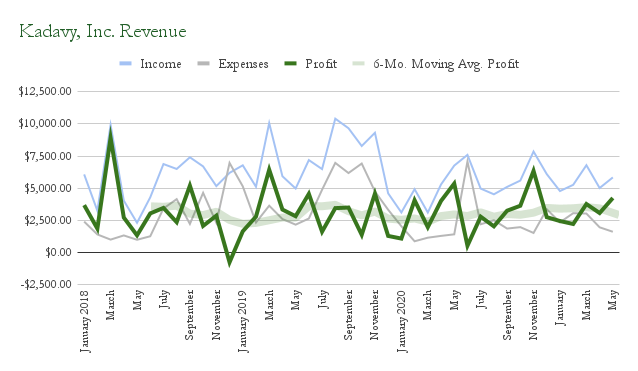

WANT TO WRITE A BOOK?
Download your FREE copy of How to Write a Book »
(for a limited time)
Book sale profits trending up
Overall profits have remained flat, but Book profits are trending up. Affiliate income profits are also trending up, slightly.
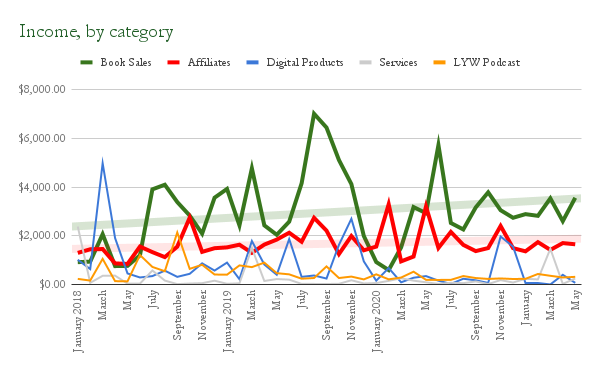
This tracks with my plans and efforts. Affiliate income is a great passive padding. Book income has been my main area of focus. I’ve de-emphasized other areas, such as revenue from Digital Products (courses), and LYW Podcast.
To give an idea of how well Book profits have done, as recently as March 2020, the 12-month running average profit on self-published books was $584. A little more than a year later, it’s now more than double that at $1,184.
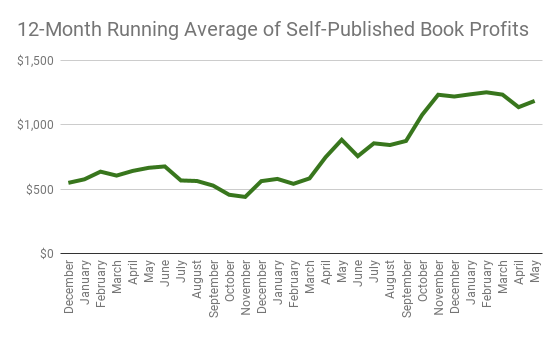
Thank you, income reports
I can’t help but feel good that the focuses of my efforts are being reflected in the numbers. I think I have these income reports to thank. Before I started these, the actions in my business were little more than a blur. I had vague ideas of what I wanted to accomplish and how to make those things happen, and I didn’t have ways of recording those ideas and seeing how my thinking played out.
My compass was and still is my curiosity, but now I can better see several steps into the future in any plan toward following my curiosity. One of the things I’ve learned along the way is that no plan will come out perfectly. The best you can do is make a percentage-confidence prediction in how something will play out, and if it’s a Black Swan play that will most likely fail, admit it to yourself.
Digital Zettelkasten has launched!
My newest short read has launched! Digital Zettelkasten: Principles, Methods, & Examples went live on May 24th. I really “dropped” this book. I had been working on it over the past couple months, and one day I just decided, Yeah, this is done. I didn’t waste time planning a launch. I just put together the ebook using Vellum, uploaded it to KDP, and scheduled an email to my list.
Digital Zettelkasten sales solid
I’ve been very pleased with the sales of Digital Zettelkasten. I wish I had made some official projections, but I do think sales have surpassed my expectations, without it being an insane success.
You can see in this report that in the one final week of May in which the book was out, it brought in more than $800 in royalties. At the introductory price of $2.99, it continues to sell at a steady clip.

Digital Zettelkasten also available direct, and wide
Just after I uploaded it to KDP, I also uploaded it to PublishDrive, to sell it on other outlets. I also sold direct on Payhip, and the direct sales have been significant. As I write this, I’ve sold over 130 copies direct for $350 revenue.
Digital Zettelkasten paperback publishing through IngramSpark
For the first time ever, I’ve published the paperback edition of a book exclusively through IngramSpark. So even if you buy through Amazon, IngramSpark is printing it. I have heard some people in the 20 Books to 50k Facebook group say they do this, and that they don’t have the shipping problems I had early on with my IngramSpark hardcover.
I figured this would be a simpler way to publish: Any updates will only have to be uploaded once, and I don’t have to make two covers to account for the minuscule difference in paper thickness. With my IngramSpark promo code from my membership to The Alliance of Independent Authors, I don’t have to pay Ingram’s upload fees. I’ve heard many authors lately say they get better printing quality from Ingram than from Amazon, and it appears Ingram will print at a lower cost, resulting in more profit.
The main downside is Ingram’s reporting is cumbersome. I think there’s a way to get some recent sales data, but you have to manually request reports, and you have to generate several reports to get all the data – so it’s really not worth doing. I’ll just wait until I get my report at the beginning of each month. Paperback sales don’t account for a huge portion of my revenue, anyway, and I can gauge the effectiveness of any marketing in real-time through my KDP reports.
Another downside is I’m still having issues that cause the book to not show as Prime-shipping eligible. In fact, the Amazon page currently shows it for sale from some third-party seller for $24.07. If you click through to “other sellers”, you can finally see where to order it with Prime shipping for the correct price of $13.95.
I had similar problems with the hardcover for The Heart to Start early on, and though I struggled unsuccessfully with contacting the support teams at both Ingram and Amazon, the problem just kind of worked itself out. I hope it does the same for this book. Since it’s not a major release, that’s why I was okay with experimenting this time around.
Price going up soon
I launched Digital Zettelkasten at an introductory price of $2.99. This gives me the most profit I can get while giving readers a low price. I make a little more than $2 a book.
As time goes on, I will raise the price of the book. As it stands right now, it has 36 ratings on Amazon, at a 4.2-star average. Unfortunately there is a single 1-star rating that is bringing that average down. The reader didn’t leave a review, so I don’t know what they hated so much about the book. The reviews that are up are glowing, however, and I even had someone on Twitter say they’ve been following the Zettelkasten method for decades, and that my explanation is one of the best they’ve seen.
https://twitter.com/seanlawson/status/1401023333081047042
I will probably increase the price slowly. Perhaps $3.49, then $3.99, then $4.49, etc. Or maybe I’ll go straight to $3.99, then $4.99, etc. I would like to eventually sell it for $9.99. I do wish I would have put a “click on a star rating” request in the back of the book, like I have in my others, but I was too excited to launch. If you have read it, can you please click on a star rating?
The Heart to Start pricing promotion
I ran a pricing promotion for The Heart to Start in early June. I realized I hadn’t done a pricing promotion for at least six months. I marked it down to $2.99, sent it to my email list, and tweeted it out. I sold 65 copies on Kindle that day. That’s about $130 profit.
Since then, the price hasn’t driven a ton of sales. I was making a few sales a day at $9.99, and at this $2.99 price, I’m hardly making more sales than that. I think I make more at $9.99. Well, the benefit of the $2.99 promotion is it gave readers on my email list a chance to read one of my books for cheap. Perhaps they will pick up other books.
Mind Management, Not Time Management now only $9.99
I priced Mind Management, Not Time Management at $14.99 for several months. I had originally planned to sell at this price once it was accepted to Great on Kindle, because I thought it would then be eligible to earn a 50% royalty. But even though that royalty plan was discontinued, I priced the book at $14.99 anyway. It felt like the right price, and I was curious to see if being in the 35% royalty plan changed the way Amazon treated the book in their algorithms. Additionally, people getting $1.50, instead of $1 credit toward other books in the Great on Kindle program seemed it wouldn’t hurt my sales.
BookBub bid didn’t go as planned
I also wanted to offer the book at $14.99 to build tension for my first BookBub Featured Deal. A $1.99 price tag would be a bigger sale off $14.99 than $9.99, and that might give me a shot at hitting the WSJ best-seller list.
Well, I applied for a BookBub Featured Deal twice, and was only accepted for an international featured deal. That went well, but BookBub rejected it for a U.S. Featured Deal a second time when I re-applied. Then, Chirp also rejected the audiobook deal.
Last month, I wondered aloud how long I could hold out at this $14.99 price. I knew I had been leaving money on the table for months, both in fewer sales due to the higher price point, and in earning half the royalties. I finally decided it was time to drop back to $9.99. My plan for a WSJ run didn’t pan out how I had planned this time. It could still happen, but not the way I was hoping.
Earning $7 a book
So, now I’m earning nearly $7 per book for MMT Kindle sales, rather than about $5.35. Meanwhile, customers are paying about 33% less for the book. And the sales are up!
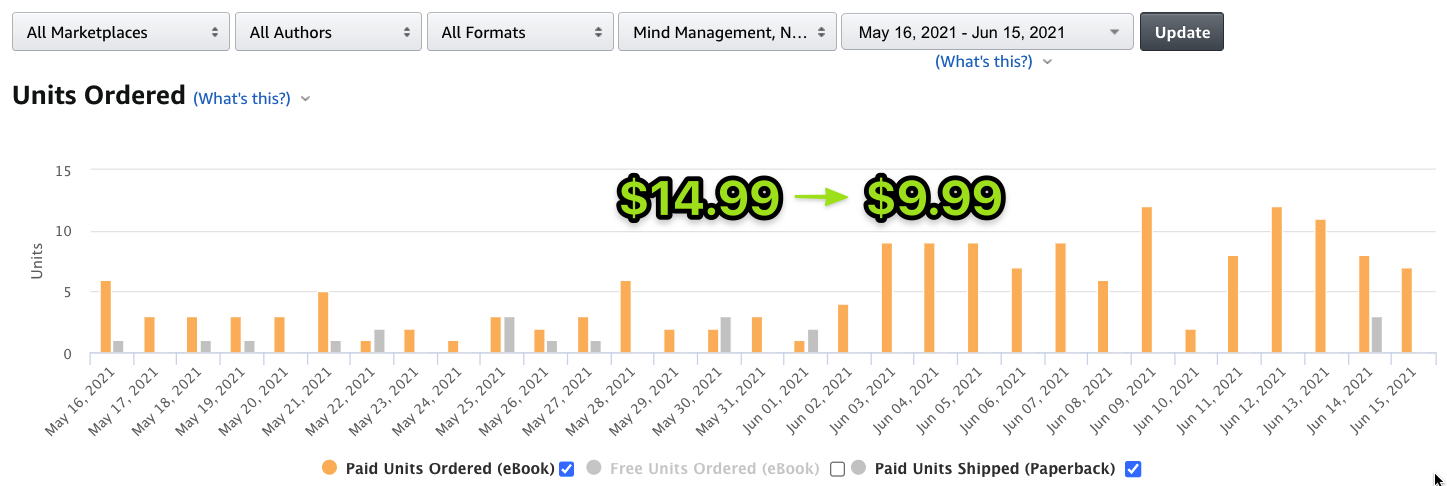
Interesting to see that paperback sales have pretty much disappeared. I guess one benefit of the $14.99 price tag was that it got the physical book into the hands of more readers.
Ramping up Amazon Ads, setting up Prestozon automation
With the more profitable price tag for MMT, I’m also going to revisit Amazon Ads. I’ve always had a few ads running in the background, but now I’ll see if I can stimulate more sales through ads.
Longtime readers will remember a couple years ago, when I was spending as much as $6,000 per month on Amazon Ads – and only turning about $1,000 in profit. At that time, I only had one major book in my catalog, though I was also making decent sales running ads on How to Write a Book. I’ve noticed generally that MMT is easier to sell than has been HTS, so that makes me curious of whether I could turn more of a profit by focusing on Amazon Ads again. I now have two full-length books and two solid-selling short reads, so that’s more to work with in terms of bringing new readers into my catalog, and giving them something more to read once they’ve finished their first book.
I don’t know if I’ll be spending quite so much per month on Amazon Ads as I once did, but I am ramping them back up. I’ve generated some Lockscreen Ads, and I’m setting up automation through Prestozon again. This is a 3-campaign system that harvests keyword ideas from auto-campaign sales, and optimizes the bids on those keywords.
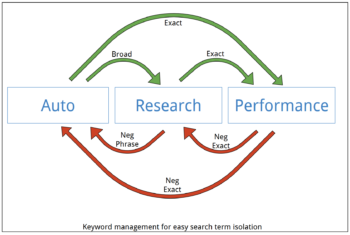
My last go-round with Prestozon, I found it hard to optimize bids, as there were so many keywords that led to sales, there wasn’t enough traffic for individual keywords to find conclusive data on which turned a profit. But, this system did help me spend a lot of money on ads, while generating at least some profit.
A major reason I spent so much on HTS ads was that, based upon reader reviews, I really believed the book would be well-received. I think that turned out to be true. I think MMT has potential to do even better, so I just want to give it that chance. I will be watching closely, as I’m sure Amazon Ads have changed a lot since almost three years ago.
Patreon drive closed
The Patreon “True Fan” membership drive has come to a close. I didn’t make any predictions about it, but it fell short of my expectations. It was great to have new members step up and join the special True Fan tier, and I love that more people are now getting these income reports in audio form. But as new members came in, old members went out, so the growth to membership was underwhelming. Overall, I gained about $50 a month in membership revenue.
I kind of started the drive on a whim, as I had been building up the “Fortress Fallacy” plan in my head. I’m glad I just went ahead with it and didn’t try to make a huge deal out of it. I may try it again in the future, but it wasn’t a huge success.
Golf project underway, in stealth mode
I continue to explore my golf project in stealth mode. The current idea is to try to bring my golf game from shooting in the 90s, to shooting in the 70s. I’m in the process of experimenting with that, getting an idea of how best to formalize my approach, and the feasibility of reaching that goal.
Courses harder than expected
The first problem I’ve run into is the only two courses I can play are extremely hard. After several round on these courses, I barely shot in the 90s one time – a 99. They’re tight “parkland”-style courses, with mature trees everywhere. Additionally, I don’t think they’re appropriately-rated (the U.S. and Colombia have their own separate golf organizations, which rate courses according to other factors other than “par”). I don’t have an official handicap yet, but if I enter the numbers into a handicap differential calculator, my scores on these courses figure out to about 30–34. Contrast that with plugging the numbers of any round I’ve played in the U.S. the past few years, and it comes out more like 25.
Sorry to the non-golfers for getting technical there. Point is, the courses are hard. In a way that’s good because it will challenge me to improve my game. In a way it’s bad because I think it makes it harder for anyone in an American audience to appreciate the progress I do make. I have played many, many, courses in my life and these are the hardest courses I’ve ever played. For reference, the LPGA recently played their U.S. Open on a course with a “slope” of 145. Slope gives you an idea what a recreational golfer would shoot on a course. The average slope of a course is 113. The courses I play are 133 and 142.
What’s a worthy goal?
I’ve been considering what kind of goal I want to go for in the golf project. A goal I originally thought of was trying to shoot 70 (2 under par). After playing these courses, that seems much harder a goal to reach than it did before. It would be more feasible if I were playing a wide-open course without trees everywhere. I’ve also considered Big Hairy Audacious Goals – the type that sounds ambitious but in reality you truly have zero chance of reaching, such as playing a PGA Tour event or qualifying for the U.S. Open. These goals can make a splash when you announce a project, and maybe it doesn’t matter that you’ll most certainly fail. Though I’d also almost certainly fail at trying to shoot 70, and that’s a less-impressive goal, so maybe BHAGs are better.
Who is it for?
As I’ve discussed potential goals with various friends, it’s also made me think of Who It’s For. When you tell most non-golfers you’re working on a golf challenge, they come up with truly ridiculous goals, such as reaching pro-level within 30 days. Even a year would be ridiculous. If I tell them I played seriously 15 years ago, and that I shot in the 70s a handful of times, then they’re notably less excited. Which makes me think, well maybe it’s not for people who don’t understand golf. Which, as I write it, makes me think, No shit, genius.
The revolt of the body
Another obstacle I’ve run into is my body. I find I just can’t string together too many days in a row of practicing and/or playing golf. I had a string of five days of practicing and/or playing, recently. I played 9 twice and the final day of that string, played 18. The following day I had a terrible headache – and I never get headaches. My body ached and I was fatigued. I slowly recovered a few days, and it was bad enough I got a COVID test (negative). It may have just been my mystery illness acting up. Hydration must be a factor, too, and I’m ramping up my intake of water and electrolytes. But, I had to take a few days off. As I write this, I am taking the day off from golf, because yesterday I lightly pulled a muscle in my back. Golf is not doing nothing, but it’s not that strenuous. It’s worth noting my home courses do not have carts. You have to walk – with a required caddy carrying your clubs. I suppose being 42 doesn’t help, but my muscles are just stubborn and slow to recover.
What I’ve learned about golf, playing business
As I contemplate what I’m learning trying to improve my golf game, I see many parallels to running my business. I shouldn’t be surprised, as the things I’ve learned running this business are a big motivation for me to try to tackle the game once again. My attempts to improve at golf 25 years ago were not unlike my attempts to succeed at business before I started thinking more critically through writing these reports. There was the perception of what was happening, but hidden within that cloud of smoke was reality.
You have to question your first impressions and break down your actions into the few factors over which you have control if you want to see reality. And once you identify the things you can control, you have to accept that your control over those things is limited. That’s golf: If you watch the career highlights of Tiger Woods, you’ll think he was a witch who could magically conjure the ball into the hole from 200 yards away. If you look past the highlights you realize almost all his shots were imperfect. He was dominant in part because he could direct that imperfection toward a goal efficiently – in the midst of a constantly-changing environment and while avoiding catastrophes. And that is business.
So that’s one idea that is starting emerge: Maybe I’ll one day write a book called, Everything You Need to Know About Business, You Can Learn Playing Golf. Just an idea. For now, I’m trying to get better, and taking note of what I learn along the way.
Creative systems making this project possible
Speaking of business, that’s another obstacle to improving at golf – I have a business to run. Additionally, I’m trying to make improving at golf a part of my business.
Fortunately, I’ve built creative systems that help me take care of much of my business with a small time investment. I have my processes optimized to produce weekly Love Mondays newsletters, and twice-monthly articles/podcast episodes. Thanks to my Zettelkasten, I make progress on these things and any upcoming books without having to carve out huge blocks of focus. Additionally, I’m just much better at getting into writing mode than I once was.
The way I see it, this golf project is taking up much of my “front burner” energy, like I talked about in Mind Management, Not Time Management. I’m able to produce the newsletter, podcast, and these income reports, with back-burner energy. I have a book idea that I may be able to produce with back-burner energy, too.
The golf project may not always take up front-burner energy. Right now it’s taking up a lot of my energy and time as I try to work out what pieces of my schedule and creative energy to dedicate to the project, and I try to see just how to make money with it.
Payment for Vietnam rights
I’ve now received payment for the Vietnamese rights of The Heart to Start. You’ll see it under “The Heart to Start Foreign”. In actuality, the payment I received was for $675. But, 10% of that was withheld for Vietnamese taxes. Since I don’t show tax payments in these reports, I reported it as $750.
I think they got a great deal. I continue to get foreign rights inquiries for other books. I even got one for Digital Zettelkasten two days after it debuted. I will see if I can negotiate better on future deals.
Kobo sales now in for BookBub international deal
Last month I reported my numbers for the recent international BookBub Featured Deal for Mind Management, Not Time Management, except I still didn’t have numbers for Kobo. I was a bit worried about it, as PublishDrive’s support wasn’t very responsive, and was generally acting as if the 0 sales showing up in my report was correct.
Well, I just got word from PD support that the correct sales are in the dashboard. Last month I said I was 70% confident there were between 48 and 123 copies sold on Kobo during the promotion – and there were! I made 106 sales through Kobo, which amounts to around $109 in revenue. The promotion made 846 sales for about $700 in revenue. Not bad for a $318 investment!
Superpeer call
You’ll see $200 for a Superpeer call. I helped a reader with creative systems for their business. It’s not a lot of money, but it’s a great feeling to have knowledge to share that makes it worth paying to talk to me. It’s great to be able to help someone just through a quick conversation!
Income
Book Sales
| Mind Management, Not Time Management Kindle | $695 |
| Mind Management, Not Time Management Paperback (Amazon) | $170 |
| Mind Management, Not Time Management (non-Amazon) | $160 |
| Mind Management, Not Time Management Audiobook | $191 |
| The Heart to Start Kindle | $363 |
| The Heart to Start Paperback (Amazon) | $69 |
| The Heart to Start “Wide” (non-Amazon) | $27 |
| The Heart to Start Audiobook | $47 |
| The Heart to Start Foreign | $750 |
| How to Write a Book Kindle | $82 |
| How to Write a Book Paperback | $135 |
| How to Write a Book “Wide” (non-Amazon) | $0 |
| How to Write a Book Audiobook | $15 |
| How to Write a Book Spanish (all) | $0 |
| Digital Zettelkasten Kindle | $613 |
| Digital Zettelkasten Wide (non-Amazon) | $232 |
| Make Money Writing on the STEEM Blockchain (all) | $7 |
| Ten Passive Income Ideas | $6 |
| Total Book Sales | $3,562 |
Digital Products
| Summer of Design | $27 |
| White Hot Course | $39 |
| Total Digital Products | $66 |
Affiliates / Advertising
| Active Campaign | $1,646 |
| SendOwl | $5 |
| Total Affiliates | $1,651 |
Love Your Work Podcast
| Patreon | $312 |
| Total LYW Podcast | $312 |
Services
| Medium | $43 |
| Superpeer | $200 |
| Total Services | $243 |
| GROSS INCOME | $5,834 |
Expenses
General
| Accounting | $276 |
| Outside Contractors | $0 |
| Podcast Editing / Publishing | $123 |
| Quickbooks | $36 |
| Total General | $435 |
Advertising
| Amazon | $858 |
| BookBub | $0 |
| Product Samples | $0 |
| Total Advertising | $858 |
Hosting
| ActiveCampaign | $135 |
| Bookfunnel | $15 |
| Drafts | $2 |
| Dropbox | $10 |
| Fathom Analtyics | $14 |
| Libsyn | $7 |
| Namecheap | $0 |
| SendOwl | $9 |
| Ulysses | $7 |
| WP Engine | $96 |
| Zapier | $14 |
| Total Hosting | $309 |
| TOTAL EXPENSES | $1,602 |
| NET PROFIT | $4,232 |



